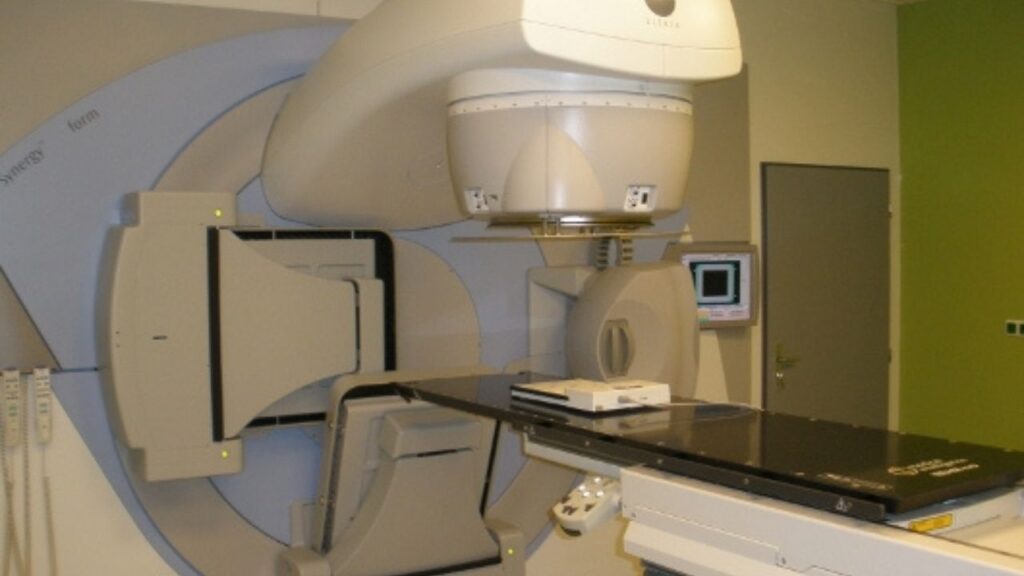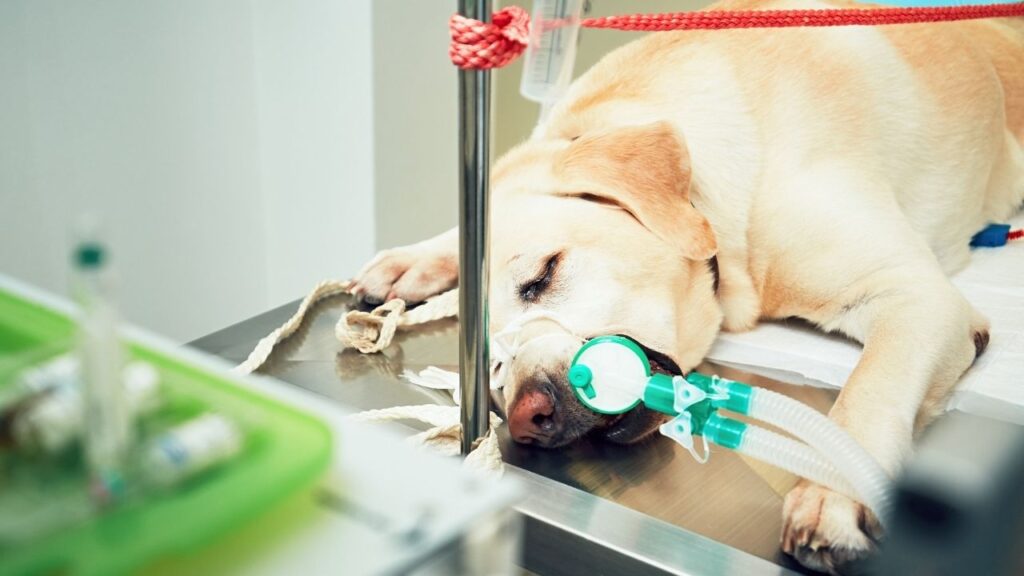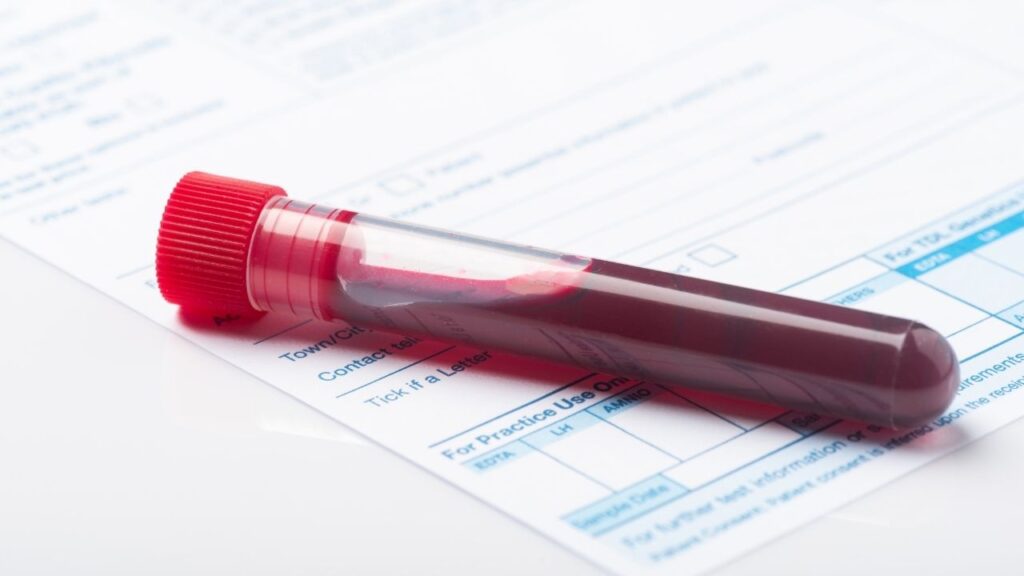A saline nasal flush is a relatively simple procedure that could yield a diagnosis and possibly help to improve symptoms.
Key Takeaways
- A saline nasal rinse is safe for dogs and may help break up upper respiratory secretions. If you find that you are using saline nasal rinse regularly to help your dog’s congestion, there may be an underlying issue that needs to be evaluated by a veterinarian.
- Vets flush a dog’s nose by putting a dog under anesthesia, packing the back of the mouth and pushing large volumes of saline into each nostril.
- The steam from a hot shower or a humidifier can help break up a dog’s nasal congestion. Lightly wiping nasal discharge with a warm cloth can also help.
Veterinarians Use a Saline Nasal Flush for Dogs to Diagnose and (Maybe) Treat
- A saline nasal flush for dogs is a minimally invasive diagnostic that sometimes is also therapeutic.1
- A nasal flush is what it sounds like: flowing saline water through the nasal passages and sinuses. This procedure has several possible uses:
- A nasal flush can be used to obtain a cellular sample for cytology or biopsy diagnostics.
- A nasal flush using hydropropulsion can sometimes be used to remove part of, or debulk, a nasal tumor while at the same time obtaining tissue samples for diagnosis.1
- In addition, removal of some of the tumor mass might provide some temporary symptom relief.1-3
What Happens When Your Dog Gets a Saline Nasal Flush
The following is a general overview of a nasal flush procedure in a dog:
- Pre-anesthesia testing will be performed, usually bloodwork and x-rays, to ensure your pet is a good candidate for anesthesia. Sometimes advanced imaging, such as a skull computed tomography (CT) will be performed to identify the exact location of the problem.
- The dog will be put under general anesthesia with a tube in place to protect the airway. During anesthesia, there will be close monitoring.
- The dog is placed with the chest and abdomen towards the ground.
- The back of the mouth is packed with gauze to prevent fluid from being swallowed or aspirated and to trap cells and tissue that may be used for analysis.
- If imaging of the skull was not performed prior to identify the area of the problem: Saline is flushed through each nostril and passes into the back of the mouth, or it may be flushed the opposite direction, from behind the soft palate (back of roof of mouth) toward the nasal passages to flow out of the nostrils and be collected there. This step is done with hydropropulsion, a large volume of saline and greater force to attempt to expel nasal tissue that will be used for sampling.
- If imaging of the skull was performed prior and location of the lesion is known: the nostrils are packed in addition to packing the back of the mouth, a catheter is guided to the area of interest, and saline is introduced and then immediately collected.
- Once any bleeding has stopped, the gauze is removed, the nasal and oral cavities are checked for any tissue or blood clots that did not flow out of nostrils or got caught in the gauze.
- The dog is taken off anesthesia and goes to a recovery area for additional monitoring. Without complications, this is an outpatient procedure, and your dog will go home the same day. Sometimes your dog will be sent home with medications for discomfort or infection.
When Nasal Flush is Recommended in Dogs
When veterinarians will want to use this treatment
The following are indications for a veterinarian to order a nasal flush procedure for a dog:
- Rubs or paws at the nose excessively
- Persistent nasal discharge
- Excessive sneezing
- Chronic nose bleeds
- Loud nasal breathing or snoring which is new and not typical for the breed
- Deformity of the nose
A nasal flush might yield cell samples that can help to identify fungal infections, inflammatory diseases, nasal mites, and cancer. A nasal flush can also be a treatment as sometimes it will result in flushing out of foreign material2 or loosening areas of fluid, pus or tissue which reduces symptoms the dog may have been experiencing.1
Cancers That Might Be Helped By a Saline Nasal Flush
Veterinarians use this procedure for nasal tumors that are inside the nasal passages or sinuses and cannot be sampled or visualized externally.
Imaging and Anesthesia Is Necessary for a Nasal Flush
Ideally, imaging of the nasal cavity and skull is done prior to a nasal flush to confirm presence of a nasal mass and condition of the nasal bones.
This can be done with several imaging modalities including x-ray, CT, magnetic resonance imaging (MRI) or rhinoscopy. A rhinoscopy looks in the nasal cavity directly with a small tube-like instrument which is a camera.
The flush is sometimes performed without imaging.
Specific directions will be provided on withholding food before general anesthesia. Since there is potential for causing bleeding in the nasal passages, veterinarians may recommend stopping some medications or supplements including non-steroidal anti-inflammatory drugs, steroids, fish oil, curcumin, chondroitin and digestive enzymes for 1-2 weeks before the procedure.
Veterinarians may recommend a Chinese herb supplement, Yunnan Baiyao, to treat or prevent nasal bleeding before and after the procedure.
Safety and Side Effects
If the cribriform plate is intact and the procedure is done by an experienced veterinarian, the risk is low. There is some potential for bleeding afterwards.
Taking Care of Your Dog at Home After a Nasal Flush
Follow specific directions on anesthesia recovery including when to offer food once your dog is home and how long to rest before resuming activity. Generally, your dog can go back to a normal schedule the following day. If there was significant bleeding from the nose during the procedure, it may be recommended to restricted activity, such as no running, playing or other vigorous activity for a few days.
Follow Up
If cytology or histopathology biopsy samples were submitted, results are usually available in about a week to ten days, depending upon your location and what types of procedures need to be performed on the tissue.
When Saline Flushes Won’t Work or Can’t Help
If the symptoms your dog is having are not coming from a problem in the nasal passages, this procedure is unlikely to be beneficial, and your veterinarian won’t recommend it.
If the cribriform plate (the bone separating the nasal passage from the brain) is weakened, a nasal flush can further disrupt it and this may cause neurological signs including seizures.1
Can Your Veterinarian Do a Saline Nasal Flush
A general practice may offer this procedure because it is relatively noninvasive and doesn’t require specialized equipment, but it is often done at specialty practices along with advanced imaging.
Expected Costs
For this procedure, there will be costs for anesthesia and monitoring, the flush, and submitting samples to the lab. These costs vary widely, but the total may run from $250-1000 for the procedure alone, not including the cost of imaging.
Topics
Did You Find This Helpful? Share It with Your Pack!
Use the buttons to share what you learned on social media, download a PDF, print this out, or email it to your veterinarian.



